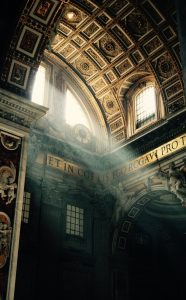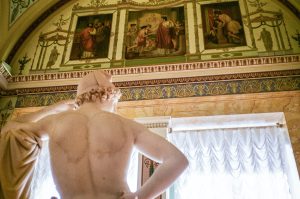Italy is a country with an incredible artistic and cultural heritage that spans over millennia. From ancient civilizations to the Renaissance and beyond, Italy has been a hub of creativity and inspiration for artists throughout history. Today, visitors can explore some of the world’s most renowned art museums in Italy, which house priceless collections of paintings, sculptures, and artifacts from various periods. In this article, we will take you on a journey through some of the most impressive art museums in Italy, providing you with a little bit of trivia along the way.
The Uffizi Gallery in Florence is one of the most famous art museums in Italy, and indeed, the world. The gallery is housed in a 16th-century palace that was commissioned by the powerful Medici family, and its collection includes some of the most famous works of the Italian Renaissance. One of the gallery’s most prized possessions is Sandro Botticelli’s ‘The Birth of Venus,’ which depicts the goddess of love emerging from the sea. Another masterpiece in the gallery is Leonardo da Vinci’s ‘Annunciation,’ which he painted during his early years in Florence.
Moving on to Rome, the Vatican Museums are a must-see for anyone interested in art and history. The museums are located within the Vatican City, a sovereign city-state that is home to the Pope and the Roman Catholic Church. The Vatican Museums house an impressive collection of artworks that have been amassed by the Popes over centuries. One of the most famous works in the museum is Michelangelo’s ‘Sistine Chapel ceiling,’ which he painted between 1508 and 1512. The ceiling depicts scenes from the Bible, including the creation of Adam and the Last Judgment.
In Venice, visitors can explore the Gallerie dell’Accademia, which houses an extensive collection of Venetian art from the 14th to the 18th century. The gallery is located in the former Santa Maria della Carità complex, which was founded in 1260. The collection includes works by Titian, Veronese, and Tintoretto, as well as many other Venetian masters. One of the most striking works in the gallery is Tintoretto’s ‘Crucifixion,’ which is over 20 feet long and depicts the dramatic scene with a sense of realism and dynamism.

In Milan, the Pinacoteca di Brera is a world-renowned art museum that houses one of the most significant collections of Italian art in the world. The gallery is located in a former Jesuit college, and its collection includes works by some of the most important Italian artists, including Raphael, Caravaggio, and Bellini. One of the gallery’s most famous works is Caravaggio’s ‘The Supper at Emmaus,’ which depicts the moment when the resurrected Jesus reveals himself to his disciples.
If you find yourself in Florence again, you may want to visit the Bargello Museum, which is housed in a former prison that was built in the 13th century. The museum’s collection includes sculptures by some of the most famous Renaissance artists, including Michelangelo and Donatello. One of the most remarkable works in the museum is Donatello’s ‘David,’ which was created in the 15th century and depicts the biblical hero in a relaxed and youthful pose.
Italy’s art museums are not only famous for their collections, but also for their architecture and history. For example, the Galleria Borghese in Rome is housed in a stunning villa that was built in the 17th century for Cardinal Scipione Borghese. The villa’s gardens are as impressive as its collection and provide visitors with a serene escape from the bustling city.
Another interesting fact about Italy’s art museums is that they often showcase art from other cultures as well. The Museo Nazionale d’Arte Orientale in Rome, for example, houses an impressive collection of Asian art, including Buddhist sculptures and Japanese ceramics. The museum was founded in 1957 and is located in the Palazzo Brancaccio, a historic building in the heart of Rome.
In addition to the famous art museums mentioned above, Italy has many other museums and galleries that are worth exploring. For example, the Museo Nazionale del Bargello in Florence houses a collection of decorative arts and sculptures from the Middle Ages to the Renaissance. The Museo Nazionale Romano in Rome is a collection of four different museums that showcase ancient Roman art and artifacts.
Italy’s art museums are not only important for preserving the country’s cultural heritage, but also for attracting visitors from all over the world. According to the Italian National Institute of Statistics, over 60 million tourists visited Italy in 2019, many of whom came to see its famous art museums and galleries.
In conclusion, Italy’s art museums are a testament to the country’s rich artistic and cultural heritage. From the Uffizi Gallery in Florence to the Vatican Museums in Rome, visitors can explore some of the world’s most renowned art collections in Italy. Whether you are interested in Renaissance paintings, ancient sculptures, or Asian art, there is a museum in Italy that will capture your imagination. So the next time you find yourself in Italy, make sure to take some time to explore its art museums and galleries. Who knows what hidden treasures you might discover!

